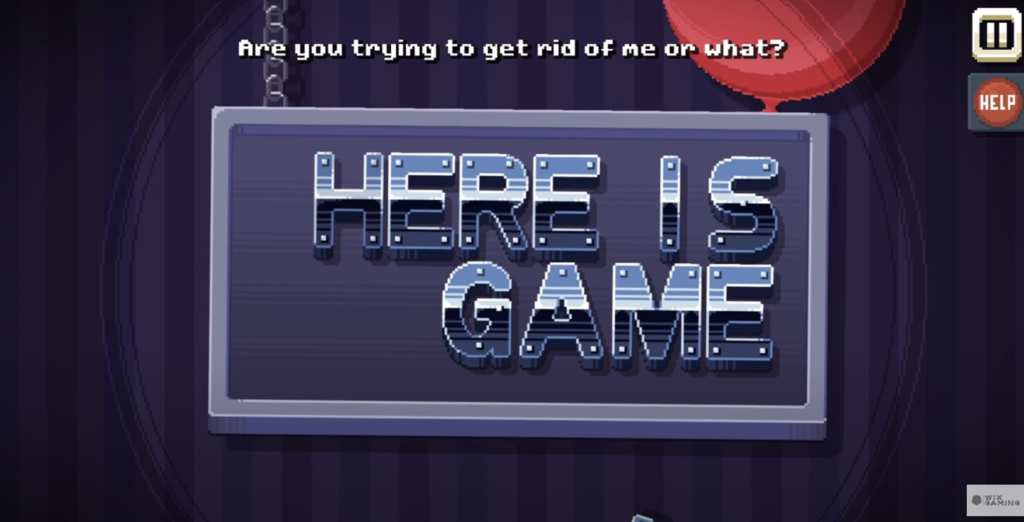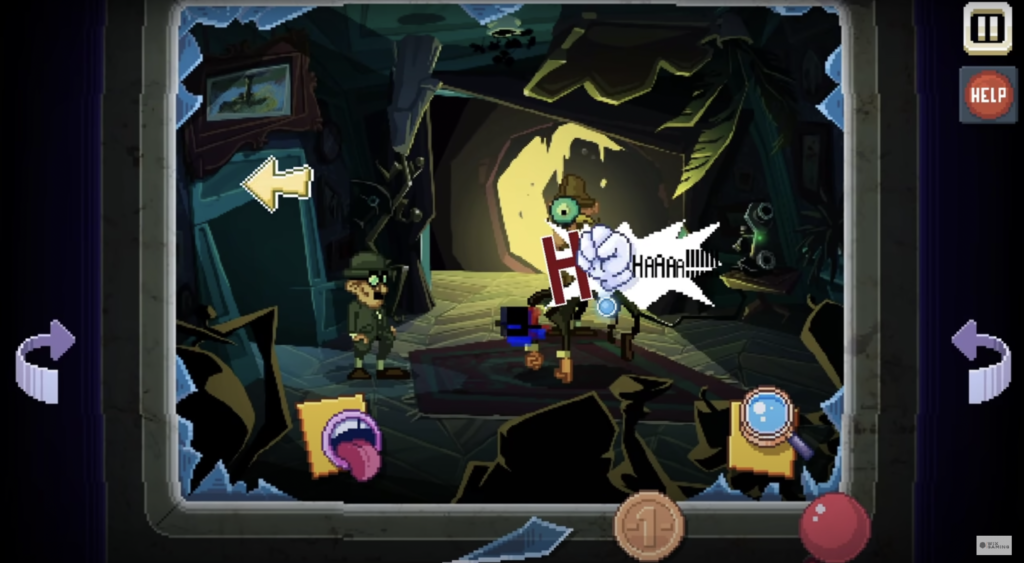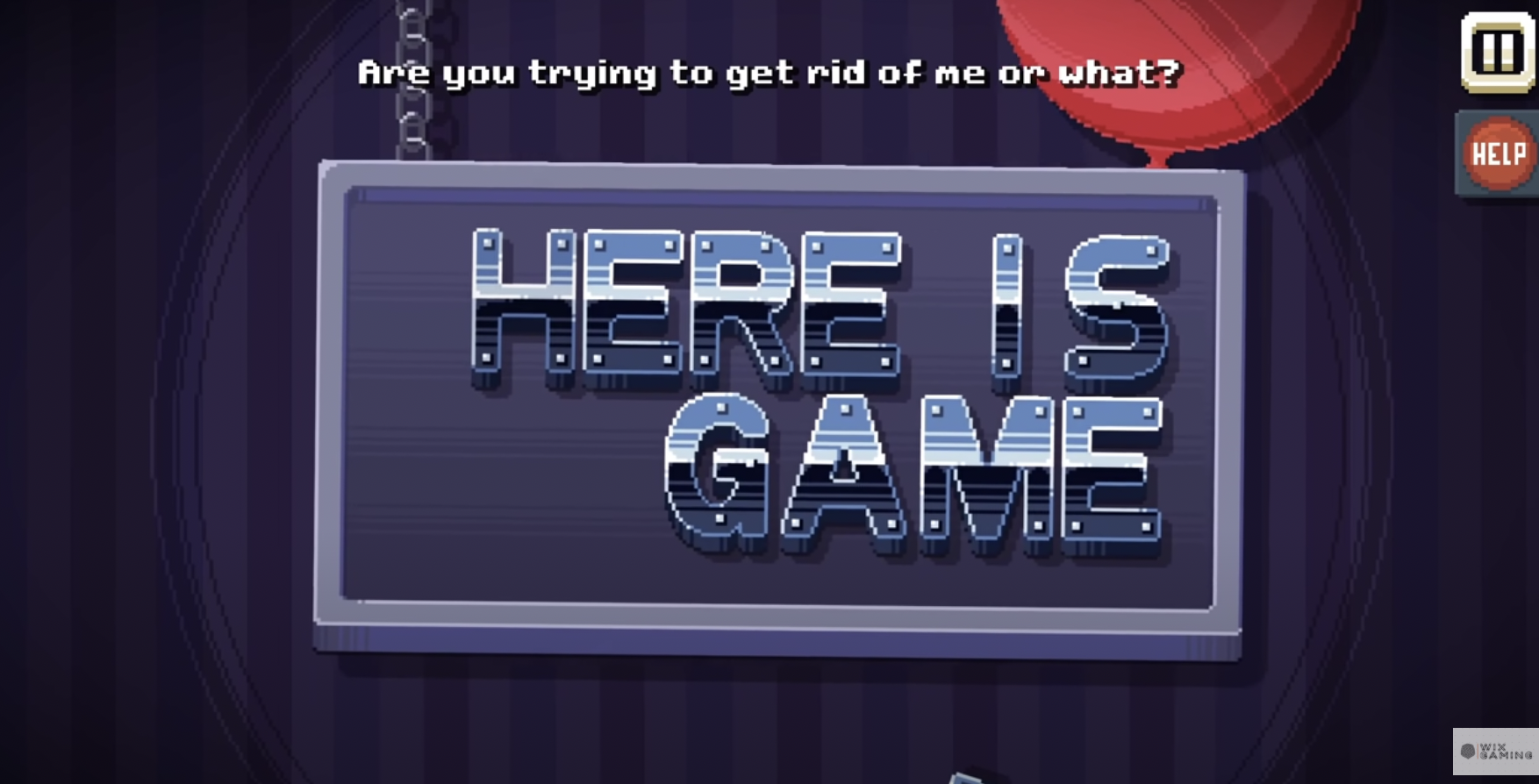There is No Game toys with players from the very beginning, instructing them that they cannot in fact play the game they opened. Players are able to deviate from typical gameplay norms, ignoring the narrated instructions in order to progress toward “opening” the game in any way possible. The player’s deviant actions allow them to click and use iconography and items to destroy the user interface or to solve puzzles.

While the player is actively fighting against the narrator’s instructions, they are concurrently constructing and following the rules of an unspoken game. Since the player’s actions have such a powerful impact on the narrative progress of the game, players might feel as though they have all of the control. However, is this access to limitless influence actually the case?
The gameplay of There is No Game causes players to feel extremely empowered to experiment with the icons, letters, and shapes on the screen, however, players do not in fact have unlimited agency. Even though players are able to interact with items that are usually non-diegetic, the game does not allow unlimited power over the items available to them. Icons and items have prescribed uses and must be employed at a certain point in order to become effective in moving forth the narrative.

For example, during the Flying Squirrel OS chapter, users must “shake” a private folder to open it, however, their pointer is unable to grab and shake the folder itself, rather, the user must turn on the music app until the loud music shakes the folder open. In this manner, the pointer is restricted in its abilities to the actions that the designers designate as part of the gameplay. The player must experiment with the powers and failures of their pointer, discovering the unspoken rules of the game.

The player remains boxed in by the predetermined solutions of puzzles, and the creative solutions that they personally might have come up with may not align with the designers’ solutions, and will therefore have no effect in the actual game. This limited interactivity might provoke questions regarding rules and restrictions within games; would there actually be no game if there were no rules? If it were the case that the player could interact with every object in the user interface with no limits, would it be possible for a game narrative to even arise? There is No Game serves as an interesting case study for these questions, providing insight into the ideas of rules, deviant action, and action-restrictions within games.
Bibliography:
“THERE IS NO GAME WRONG DIMENSION FULL GAME Complete walkthrough gameplay – No commentary,” WiX GaminG, YouTube, https://www.youtube.com/watch?v=mm9z1ewkjKs.

